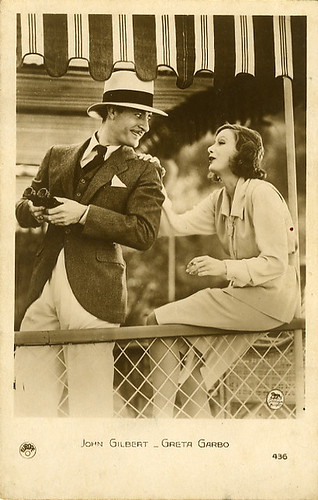
In the gilded age of Old Hollywood, where dazzling stars were manufactured and public personas meticulously crafted, one figure stood apart, cloaked in an almost impenetrable mystique: Greta Garbo. Her name alone conjures images of melancholic beauty, profound depth, and an enigmatic allure that captivated millions yet remained tantalizingly out of reach. From her humble beginnings in a working-class district of Stockholm to her ascent as one of the silver screen’s greatest actresses, Garbo’s journey was as dramatic and compelling as any of the tragic characters she immortalized on film.
Indeed, Garbo cultivated an image that was unique in its deliberate detachment. Known as the ‘Swedish Sphinx,’ she famously shunned publicity, rarely granted interviews, and possessed an innate aversion to the relentless glare of the public eye. This desire for privacy, far from diminishing her appeal, only intensified the fascination surrounding her, transforming her into a cinematic legend whose life off-screen was as intriguing as her performances on it.
This article endeavors to peel back the layers of mystique, tracing the remarkable trajectory of Greta Garbo’s life and career. We embark on a journey through her transformative experiences, from the somber realities of her youth to her triumphant, and at times tumultuous, years as a Hollywood icon, ultimately exploring the profound moments that shaped the woman behind the legend.
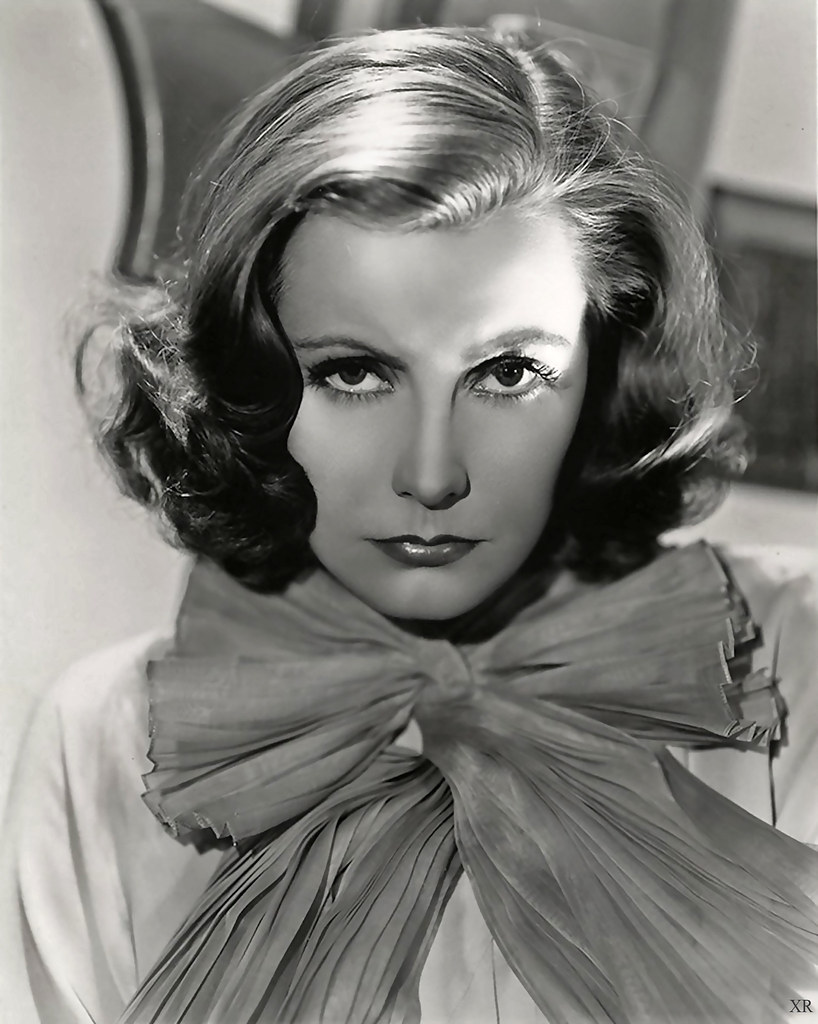
1. **Early Life and Humble Beginnings**Greta Lovisa Gustafsson, the woman who would become Greta Garbo, was born on September 18, 1905, in Södermalm, Stockholm, Sweden. She was the youngest of three children, growing up in an impoverished working-class district that she later described with a striking sense of melancholy. Her father, Karl Alfred Gustafsson, was a laborer, and her mother, Anna Lovisa, worked at a jam factory.
Garbo’s childhood was marked by a pervasive sense of gloom. She vividly recalled, “It was eternally grey—those long winter’s nights. My father would be sitting in a corner, scribbling figures on a newspaper. On the other side of the room, my mother is repairing ragged old clothes, sighing. We children would be talking in very low voices, or just sitting silently. We were filled with anxiety, as if there were danger in the air.” This early environment undoubtedly contributed to her introspective and somewhat somber screen persona.
As a child, Garbo was a shy daydreamer, preferring to play alone and disliking school intensely. Despite her shyness, she possessed a natural leadership quality and developed an early interest in theatre. She would direct her friends in make-believe games, nurturing a nascent dream of becoming an actress. A significant turning point in her youth occurred during the winter of 1919, when her father fell ill with the Spanish flu and lost his job. Garbo diligently cared for him, accompanying him to weekly hospital treatments, until his death in 1920 when she was just 14 years old. This profound loss, coupled with her early graduation from school at 13 and the subsequent lack of high school education, contributed to a lifelong inferiority complex.
Read more about: Top Celebs Who Mastered Reinvention: Iconic Photos and Public Image Transformations
2. **First Steps into Show Business**Following her father’s death, and typical for a working-class girl in Sweden at the time, Garbo began working to support her family. Her initial employment was as a soap-lather girl in a barber shop, a stark contrast to the glamorous world she would later inhabit. She then secured a job at the PUB department store, where she ran errands and worked in the millinery department.
Her striking looks quickly caught the attention of the store’s management, leading to more lucrative work modeling hats for PUB’s catalogues. This experience soon propelled her into the nascent world of film commercials. In 1920, a director of film commercials for the department store cast Garbo in roles advertising women’s clothing, with her very first commercial premiering on December 12, 1920.
By 1922, her burgeoning talent had caught the eye of director Erik A. Petschler, who gave her a part in his short comedy, *Peter the Tramp*. This marked her first foray into cinematic acting. Concurrent with these early professional experiences, Garbo pursued formal training, studying at the Royal Dramatic Training Academy in Stockholm from 1922 to 1924, further honing her craft and preparing her for the extraordinary path ahead.
Read more about: Christopher Atkins’ Unforgettable Journey: From ‘Blue Lagoon’ Heartthrob to Silver-Haired Grandpa, A Life Transformed
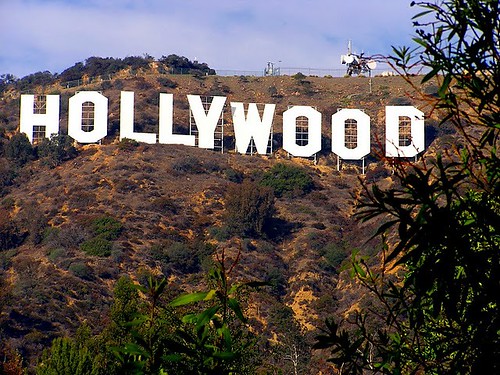
3. **Discovery by Mauritz Stiller and Hollywood’s Call**The pivotal moment that would irrevocably alter Greta Garbo’s destiny arrived in 1924 when she was recruited by the acclaimed Finnish director Mauritz Stiller. Stiller cast her in a principal part in his film *The Saga of Gösta Berling*, a grand dramatization of the famous novel by Nobel Prize winner Selma Lagerlöf. This role was transformative, not just for its exposure, but because Stiller recognized in Garbo a unique and extraordinary talent.
Stiller swiftly became her mentor, taking on the crucial role of training her as a film actress and meticulously managing every aspect of her nascent career. His guidance was instrumental in shaping her early performances and instilling in her the discipline and artistic integrity that would define her work. Following her success in *Gösta Berling*, Garbo secured a starring role in the German film *Die freudlose Gasse* (Joyless Street or The Street of Sorrow, 1925), directed by G. W. Pabst and co-starring the legendary Asta Nielsen. Garbo herself held Nielsen in high regard, remarking, “In terms of expression and versatility, I am nothing to her.”
It was during this period that her magnetic presence began to draw attention from across the Atlantic. Louis B. Mayer, the powerful chief executive of Metro-Goldwyn-Mayer (MGM), became aware of Stiller and, by extension, Garbo. Accounts vary on the exact circumstances, but a prevailing narrative suggests that Stiller, offered a contract by Mayer, insisted that Garbo be an inseparable part of any deal. Mayer, initially hesitant, was reportedly captivated by Garbo’s magnetism after a private viewing of *Gösta Berling*. His daughter recalled him saying, “It was her eyes, I can make a star out of her.” Another version asserts that Garbo was Mayer’s primary interest all along, with his declaration, “I’ll take her without him. I’ll take her with him. Number one is the girl.” Either way, her destiny was sealed for Hollywood.

4. **Arrival in Hollywood and Initial Struggles**In 1925, Greta Garbo, unable to speak English, embarked on the ten-day crossing on the SS Drottningholm, destined for Hollywood. She arrived in New York in July with Stiller, but their Hollywood dream did not immediately materialize. They endured more than six months without any word from MGM, a period of disheartening uncertainty. Deciding to take matters into their own hands, they traveled to Los Angeles, only to face another five weeks of studio silence.
On the verge of despair and contemplating a return to her homeland, Garbo penned a poignant letter to her boyfriend back in Sweden, expressing her profound loneliness and homesickness: “You’re quite right when you think I don’t feel at home here… Oh, you lovely little Sweden, I promise that when I return to you, my sad face will smile as never before.” It was a Swedish friend in Los Angeles who ultimately intervened, contacting MGM production boss Irving Thalberg and securing a screen test for Garbo.
The results of this test were, as author Frederick Sands noted, “electrifying.” Thalberg was immensely impressed and immediately began the meticulous process of grooming the young actress. This involved addressing her teeth, ensuring she lost weight, and arranging intensive English lessons. It was a period of intense transformation, preparing her not just for the screen, but for the demanding persona MGM envisioned for her.
Read more about: DOROTHY’s Unyielding Spirit: Charting the American Rock Band’s Journey, Evolution, and Enduring Impact on Modern Music
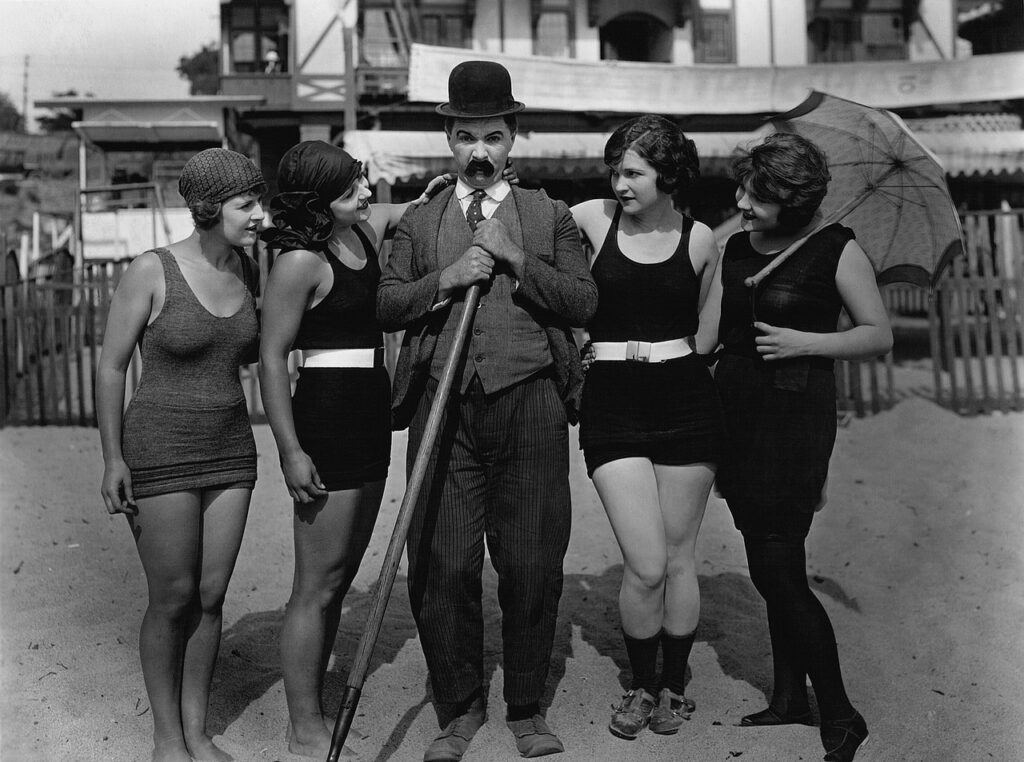
5. **Silent Film Stardom and the “Art Deco Diva”**Irving Thalberg, a visionary in studio management, swiftly orchestrated Garbo’s image, famously decreeing that she would henceforth play “a young, but worldly wise, woman.” This vision, however, initially clashed with Garbo’s own perception, as his actress wife, Norma Shearer, recounted: “Miss Garbo at first didn’t like playing the exotic, the sophisticated, the woman of the world. She used to complain, ‘Mr. Thalberg, I am just a young gur-rl!’” Thalberg, undeterred, pressed on, understanding the powerful allure he was cultivating.
Garbo’s first American film, *Torrent* (1926), an adaptation of a Vicente Blasco Ibáñez novel, saw her replacing the 10-years-senior Aileen Pringle. Playing a peasant girl turned singer opposite Ricardo Cortez, the film was a hit, and Garbo’s performance, despite a cool reception from the trade press for the film itself, was widely praised. Her success prompted Thalberg to cast her in a similar role in *The Temptress* (1926), another Ibáñez adaptation. Despite her reluctance to play another ‘vamp’ and her dislike for the script, she was given top billing opposite Antonio Moreno.
*The Temptress* proved a harrowing experience, particularly for her mentor Stiller, who struggled with the studio system and was ultimately fired. Though expensive and initially a financial loss for MGM, Garbo’s performance garnered rave reviews, solidifying her status as a new star. Her lightning ascent continued with eight more silent film hits, three of which she starred in alongside the leading man John Gilbert. Their first collaboration, *Flesh and the Devil* (1926), was described by silent film expert Kevin Brownlow as featuring “a more erotic performance than Hollywood had ever seen.” Their palpable on-screen chemistry spilled into a real-life romance, leading them to live together by the film’s end. Audiences were mesmerized, and Garbo was a sensation.
Her impact was undeniable. Profits from her third film with Gilbert, *A Woman of Affairs* (1928), dramatically catapulted her to become Metro’s top star of the 1928–1929 box office season, effectively usurping the long-reigning silent queen, Lillian Gish. Reviewer Pierre de Rohan, writing in the New York Telegraph in 1929, eloquently summarized her appeal: “She has glamour and fascination for both sexes which have never been equaled on the screen.” Off-screen, her unique fashion sense, favoring men’s shoes and clothes, trench coats, simple shirts, cigarette pants, slouch hats, and big sunglasses, earned her the moniker “the Art Deco Diva,” and she is credited with popularizing the “slouchy hat.”
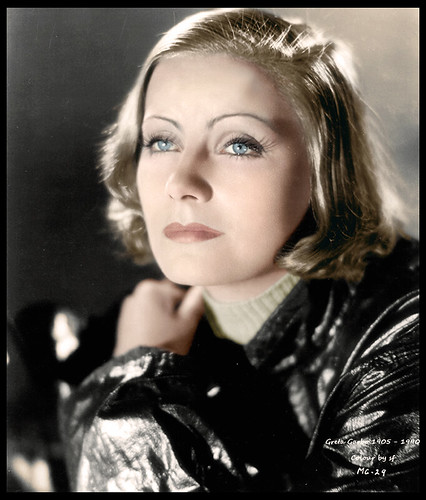
6. **The Garbo Acting Style**Garbo’s profound impact on acting and her captivating screen presence swiftly cemented her reputation as one of Hollywood’s preeminent actresses. Film historian and critic David Denby eloquently argues that Garbo introduced an unprecedented subtlety of expression to the art of silent acting, an effect on audiences that “cannot be exaggerated.” Her performances were characterized by nuanced, almost imperceptible shifts that conveyed a universe of emotion and thought.
Denby elaborated on her distinctive style: “She lowers her head to look calculating or flutters her lips… Her face darkens with a slight tightening around the eyes and mouth; she registers a passing idea with a contraction of her brows or a drooping of her lids. Worlds turned on her movements.” This ability to convey complex inner states with minimal external gestures was revolutionary, allowing audiences to project their own interpretations onto her enigmatic visage.
During this prolific period, Garbo began to demand highly unusual conditions on her sets, conditions that contributed significantly to her growing mystique. She strictly prohibited visitors, including powerful studio executives, from her sets, and insisted that black flats or screens surround her to shield her from the gazes of extras and technicians. When questioned about these eccentric requirements, she offered a revealing insight into her creative process: “If I am by myself, my face will do things I cannot do with it otherwise.” This unwavering commitment to her craft, and her need for absolute focus, underscored her extraordinary dedication.
Despite her immense success as a silent film star, there was an underlying apprehension within the studio regarding her transition to sound. MGM executives feared that her distinct Swedish accent might hinder her effectiveness in talkies, leading them to delay the inevitable shift for as long as possible. Ironically, MGM itself was the last major Hollywood studio to fully convert to sound, and Garbo’s final silent film, *The Kiss* (1929), marked the studio’s own swansong in the silent era. Yet, despite these anxieties, Garbo would defy expectations, becoming one of the biggest box-office draws of the subsequent decade.
Read more about: From Kiss-Cams to Hard Launches: 14 ‘Relatable’ Celebs Whose Private Lives Are Wildly Over-the-Top!
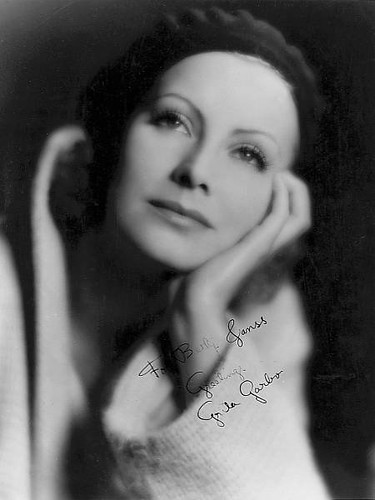
7. **”Garbo Talks!”: The Transition to Sound**The much-anticipated moment arrived in late 1929 when MGM cast Garbo in *Anna Christie* (1930), a film adaptation of Eugene O’Neill’s 1922 play. This marked her inaugural speaking role, a moment that had been shrouded in apprehension and intense public curiosity. The screenplay, meticulously adapted by Frances Marion and produced by Irving Thalberg and Paul Bern, was designed to showcase her voice.
Sixteen minutes into the film, the moment arrived that would become legendary. Garbo famously uttered her first line on screen: “Gimme a whiskey, ginger ale on the side, and don’t be stingy, baby.” The premiere in New York City on February 21, 1930, was publicized with the iconic catchphrase “Garbo talks!” The film became the highest-grossing film of the year, a resounding success that dispelled all doubts about her ability to captivate audiences with her voice.
Her performance in *Anna Christie* garnered widespread positive reviews. Mordaunt Hall of The New York Times enthusiastically remarked that Garbo was “even more interesting through being heard than she was in her mute portrayals. She reveals no nervousness before the microphone and her careful interpretation of Anna can scarcely be disputed.” Her success in this challenging transition earned her her first Academy Award for Best Actress nomination, a combined nomination that also recognized her performance in *Romance* (1930). Following the filming, Garbo even filmed a German-language version of *Anna Christie* with a different director and cast, released in December 1930, further certifying her successful transition to talkies. In subsequent films like *Romance*, where she played an Italian opera star, and *Inspiration* (1931), opposite Robert Montgomery, her star power continued unabated. Her profile was even utilized to boost the career of the then-relatively unknown Clark Gable in *Susan Lenox (Her Fall and Rise)* (1931). Although these films did not quite match the sensational success of her sound debut, Garbo remained firmly ensconced as the most popular female star in the United States in both 1930 and 1931, cementing her place as a true Hollywood phenomenon.
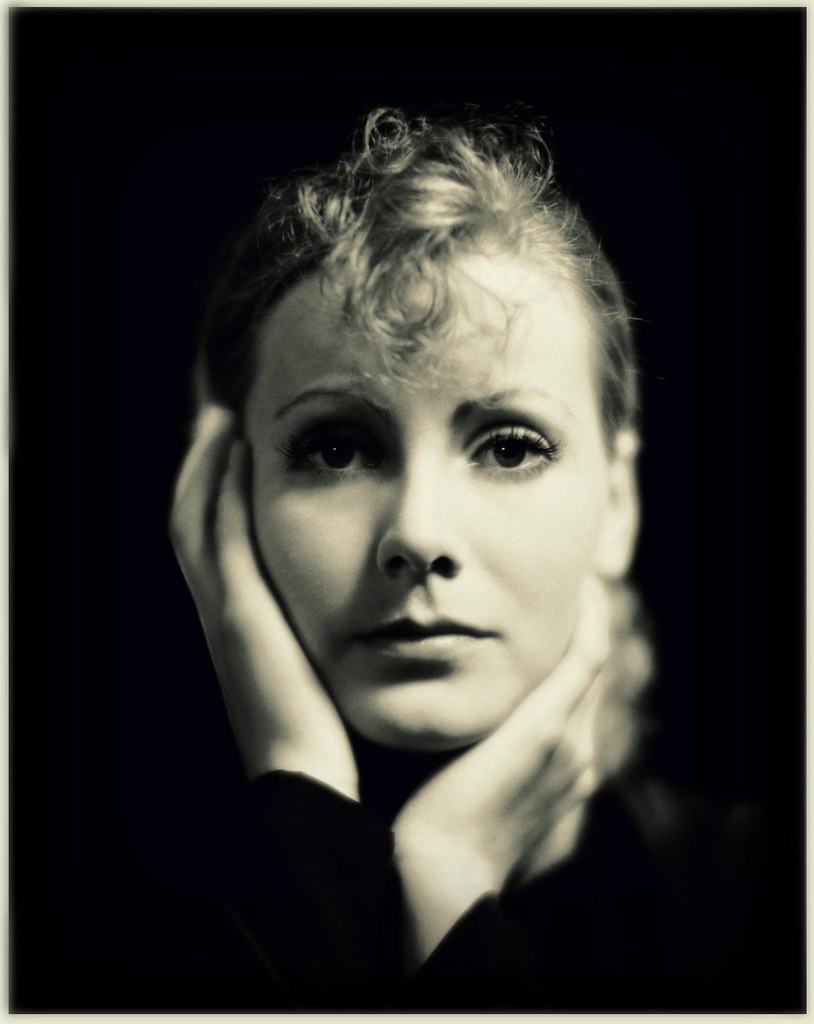
8. **The Apex of ‘Garbomania’: International Triumph and Unprecedented Power**Following her triumphant transition to sound, Greta Garbo’s star power ascended to an almost mythical level, ushering in the era of ‘Garbomania.’ Her captivating performances in films like *Mata Hari* (1931), where she portrayed a World War I German spy opposite Ramón Novarro, created a sensation, drawing such massive crowds that police reserves were required to maintain order at its release. The following year, she solidified her legendary status with *Grand Hotel* (1932), playing a Russian ballerina amidst an ensemble cast that included Hollywood luminaries such as John Barrymore and Joan Crawford.
Both *Mata Hari* and *Grand Hotel* were not only critical darlings but also monumental commercial successes, becoming MGM’s highest-earning films for 1931 and 1932 respectively. This unparalleled financial success earned Garbo the formidable moniker, ‘the greatest money-making machine ever put on screen.’ Her immense popularity afforded her a rare degree of leverage in the studio system; by 1932, her contracts allowed her to dictate terms and become increasingly selective about the roles she chose, a testament to her unique position in Hollywood.
Amidst this fervent adoration, Garbo’s close friend Mercedes de Acosta penned a screenplay for her to embody Joan of Arc, a project that, despite its artistic potential, was ultimately rebuffed by MGM and shelved. Nevertheless, her fanatical worldwide following continued to surge, and the phenomenon of ‘Garbomania’ reached its absolute zenith, marking a period where Garbo’s influence over both cinema and popular culture was truly unparalleled.
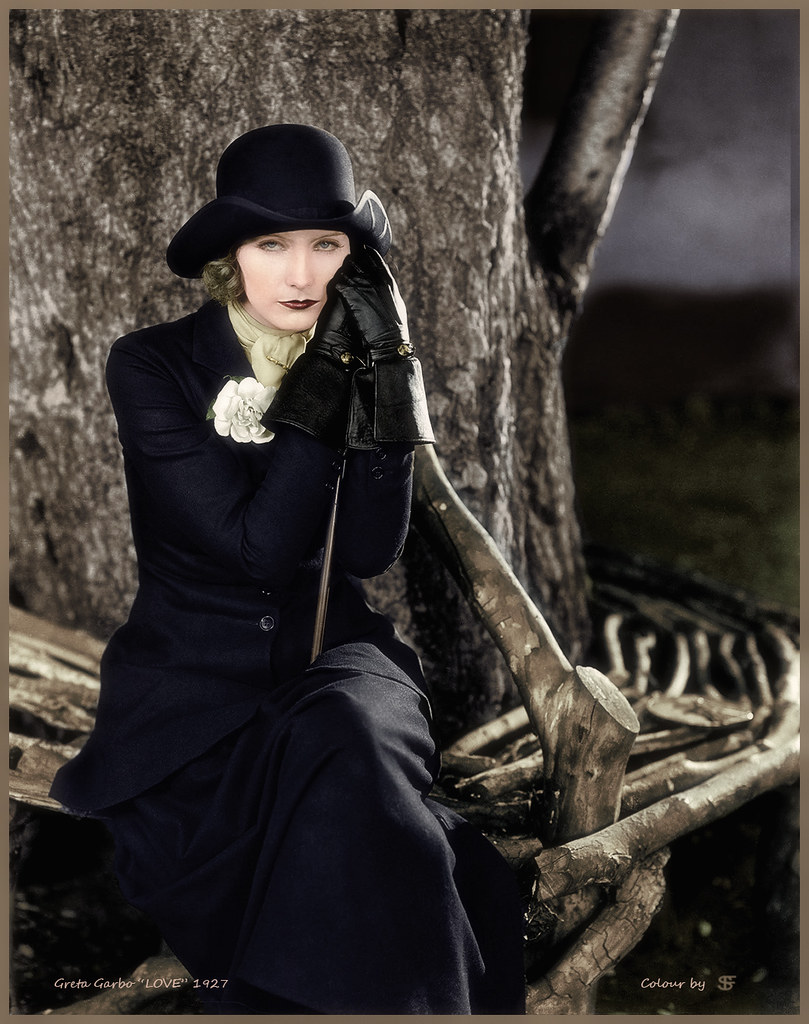
9. **Queen Christina: Asserting Artistic Vision and Redefining Studio Relations**After her contract with MGM expired and a brief return to Sweden, Greta Garbo re-entered negotiations with the studio, leading to a pivotal moment in her career that dramatically underscored her artistic control. After nearly a year of intricate discussions, Garbo agreed to renew her contract, but not without firm stipulations: she insisted on starring in *Queen Christina* (1933) and demanded a staggering salary increase to $300,000 per film. Despite initial reluctance, MGM ultimately relented to her demands, recognizing her irreplaceable value.
The screenplay for *Queen Christina* was meticulously crafted by Salka Viertel, a close friend and collaborator. While MGM initially suggested prominent leading men like Charles Boyer or Laurence Olivier, Garbo staunchly rejected them, instead advocating for her former co-star and real-life lover, John Gilbert. The studio was deeply apprehensive, fearing that Gilbert’s then-declining career might adversely affect the film’s box-office performance. Yet, Garbo’s conviction prevailed, showcasing her unwavering commitment to her artistic vision and loyalty.
*Queen Christina* was conceived as a lavish production, ranking among MGM’s most ambitious undertakings of its time. Publicized with the electrifying slogan ‘Garbo returns,’ the film premiered in December 1933 to widespread positive reviews and immense box-office triumph, becoming the highest-grossing film of the year. However, its release was not without controversy, as censors objected to certain scenes, including those where Garbo disguised herself as a man and shared a kiss with a female co-star, highlighting the progressive, boundary-pushing nature of her work.
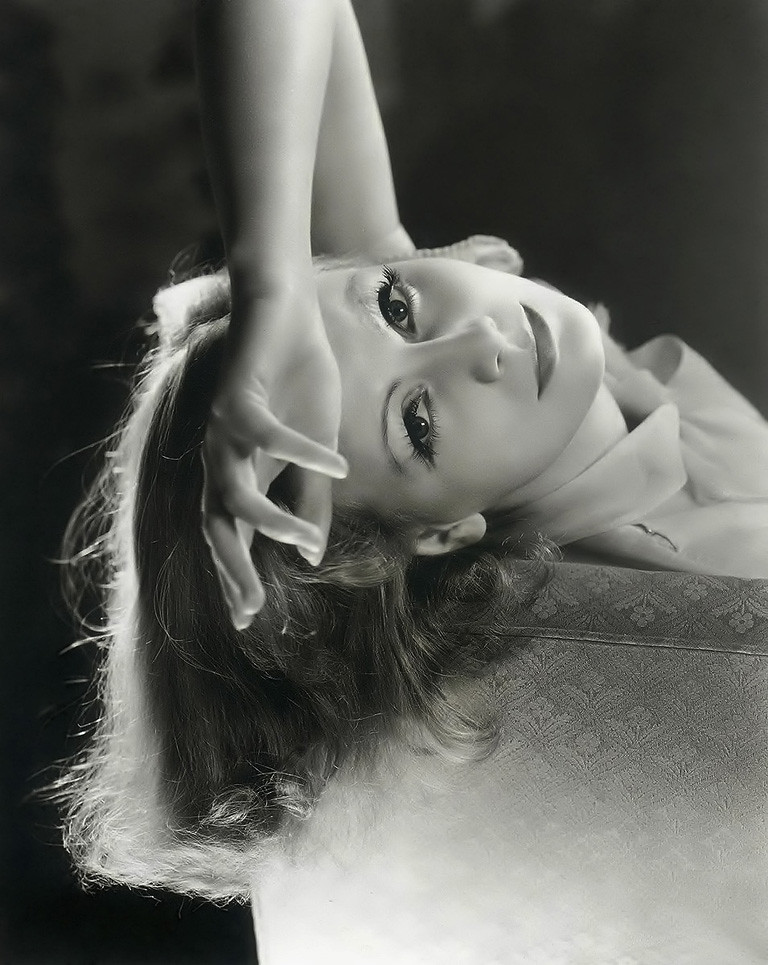
10. **Navigating Shifting Tides: Critiques, Triumphs, and the ‘Box Office Poison’ Label**Despite her enduring domestic popularity in the early 1930s, the profitability of Greta Garbo’s films after *Queen Christina* increasingly relied on international markets. The sophisticated, historical, and melodramatic narratives she gravitated towards, often on Viertel’s advice, resonated profoundly with European audiences but found considerably less traction in the United States. In the austere climate of the Great Depression, American filmgoers seemed to favor more ‘home-grown’ screen pairings, such as the dynamic duo of Clark Gable and Jean Harlow.
Garbo, however, continued to deliver iconic performances. She famously chose to portray the titular character in Leo Tolstoy’s *Anna Karenina* (1935), a role that many consider one of her most renowned. Her nuanced performance earned her the prestigious New York Film Critics Circle Award for Best Actress, and while the film garnered significant international success and better domestic rentals than MGM had initially anticipated, its overall profit was notably diminished by Garbo’s exorbitant salary, a recurring theme in her later career.
Her next project, George Cukor’s romantic drama *Camille* (1936), is widely regarded by many critics and film historians as her finest performance. Playing the doomed courtesan Marguerite Gautier, Garbo’s portrayal was meticulously crafted by Cukor, and the film achieved international success, marking her first major triumph in three years. It brought her another New York Film Critics Circle Award for Best Actress and a third Academy Award nomination. Tragically, production was shadowed by the sudden death of Irving Thalberg, a profound personal loss for Garbo, who cherished *Camille* as her favorite film.
Yet, this artistic peak was swiftly followed by a commercial nadir. Her subsequent film, Clarence Brown’s lavish *Conquest* (1937) opposite Charles Boyer, dramatized the romance between Napoleon and Marie Walewska. Despite being MGM’s most heavily publicized and expensive film of the year, it proved to be one of the studio’s biggest box-office failures of the decade. This commercial misstep, combined with similar fates for other major stars, led to a shocking declaration: on May 3, 1938, Harry Brandt of the Independent Theatre Owners of America publicly labeled Garbo, alongside other luminaries like Joan Crawford and Katharine Hepburn, as ‘Box Office Poison,’ a stinging indictment that signaled a challenging turn in her career.

11. **The Unforeseen Transformation: ‘Garbo Laughs!’ and the Triumph of Comedy**Stung by the commercial failure of *Conquest* and the ignominious ‘Box Office Poison’ label, MGM recognized that a drastic change in direction was imperative to salvage Greta Garbo’s career. The studio devised a bold strategy, pairing her with the esteemed producer-director Ernst Lubitsch for her inaugural foray into the realm of comedy. The result was *Ninotchka* (1939), a film that would not only revive her career but also profoundly reshape her public image.
*Ninotchka* was one of Hollywood’s pioneering films to subtly satirize the Soviet Union under Joseph Stalin, contrasting its rigid, gray realities with the vibrant, pre-war charm of Paris, all under the guise of a lighthearted romantic comedy. The premise itself was revolutionary for Garbo, who had been synonymous with melancholic, dramatic roles. The publicity campaign ingeniously played on this transformation, proclaiming the iconic catchphrase: ‘Garbo laughs!’ a bold declaration that heralded a seismic shift from her traditionally serious and enigmatic persona.
The film premiered in October 1939 to widespread critical acclaim and immense box-office success, both in the United States and internationally. It became a cultural phenomenon, proving that Garbo could not only command dramatic intensity but also possess a keen comedic timing and a captivating, lighter touch. While it was banned in the Soviet Union for its satirical content, *Ninotchka* earned Garbo her fourth Academy Award nomination, unequivocally demonstrating her versatility and capacity for reinvention. It was a spectacular comeback, forever adding ‘comedienne’ to her illustrious list of accomplishments.

12. **The Final Curtain: *Two-Faced Woman* and the Inevitable Retreat**Building on the unexpected triumph of *Ninotchka*, MGM attempted to further reinvent Greta Garbo with George Cukor’s *Two-Faced Woman* (1941). This romantic comedy aimed to transform her into a chic, modern woman, re-teaming her with Melvyn Douglas. The film presented Garbo in a ‘double’ role, showcasing her dancing the rhumba, swimming, and skiing – activities designed to emphasize a lighter, more contemporary image, far removed from her earlier dramatic heroines.
However, the film was met with scathing critical reviews, becoming a source of considerable humiliation for Garbo, who famously referred to it as ‘my grave.’ While popular belief often cites *Two-Faced Woman* as a catastrophic box-office failure, it actually performed reasonably well financially. Nevertheless, it marked the end of her illustrious film career; at just thirty-six years old, she had completed 28 feature films in a span of 16 intense years.
Garbo did not initially intend to retire. The collapse of the crucial European market due to World War II made finding suitable film vehicles problematic for MGM. She signed a one-picture deal in 1942 for *The Girl from Leningrad*, but the project dissolved. She harbored hopes of returning post-war but was increasingly ambivalent and indecisive, grappling with worries about her age, famously stating, ‘Time leaves traces on our small faces and bodies. It’s not the same anymore, being able to pull it off.’ Director George Cukor believed she ‘just gave up,’ rather than being solely defeated by the film’s failure.
Even after a prolonged hiatus, a glimmer of a return appeared in 1948 when she signed a contract with producer Walter Wanger for a film based on Balzac’s *La Duchesse de Langeais*. Max Ophüls was attached to direct, and Garbo made several screen tests, learned the script, and even traveled to Rome in 1949 for shooting. Tragically, the project was abandoned due to a failure in financing. These screen tests, the last time Garbo ever stepped in front of a movie camera, were thought lost for 41 years until their rediscovery in 1990. She famously rejected the role of Norma Desmond in Billy Wilder’s *Sunset Boulevard* (1949), clarifying, ‘I had no interest in the part whatsoever.’ Though continually offered roles throughout her retirement, she declined most, often pulling out of accepted projects due to the slightest issue. Years later, Garbo confessed to Swedish biographer Sven Broman, ‘I was tired of Hollywood. I did not like my work. There were many days when I had to force myself to go to the studio… I really wanted to live another life.’
13. **The Unyielding Veil: Garbo’s Public Persona and Fierce Pursuit of Privacy**From the nascent stages of her career, Greta Garbo cultivated a public persona defined by an almost obsessive need for privacy, a trait that became as legendary as her acting. She consistently eschewed Hollywood’s pervasive social functions, preferring solitary pursuits or the company of a select few friends. Her aversion to the limelight was absolute: she never signed autographs, rarely responded to fan mail, and almost never granted interviews, creating a frustrating dynamic for a studio eager to promote its biggest star.
Her steadfast refusal to engage with the public extended even to the most prestigious events; Garbo famously never attended the Academy Awards, even when she herself was nominated. This profound desire for solitude, which she attributed to her childhood, was genuine. In a 1928 interview, she candidly explained, ‘As early as I can remember, I have wanted to be alone. I’ve always been moody. I detest crowds, I don’t like many people.’ Years later, artist James Montgomery Flagg recalled her confessing to melancholia, a sentiment echoed in a 1937 letter to Salka Viertel: ‘It is hard and sad to be alone, but sometimes it’s even more difficult to be with someone.’
Garbo’s deep suspicion and mistrust of the media, coupled with her frequent clashes with MGM executives, meant she routinely defied Hollywood’s publicity conventions. The press, in turn, dubbed her the ‘Swedish Sphinx,’ an epithet that captured the essence of her enigmatic nature. Paradoxically, her reticence and fear of strangers only amplified the mystery and mystique she projected, both on screen and in her private life. MGM, realizing the power of this allure, eventually capitalized on it, fostering the image of a silent, reclusive woman of mystery. In a twist of fate, despite her strenuous efforts to avoid publicity, Garbo became one of the twentieth century’s most publicized women. Her iconic line from *Grand Hotel*, ‘I want to be alone,’ became indelibly linked with her image, even though she later clarified she had actually said, ‘I want to be let alone,’ expressing a desire for freedom from intrusion rather than sheer isolation.
14. **The ‘Art Deco Diva’: Style, Solitude, and the Life of a Collector**Beyond her cinematic roles, Greta Garbo’s distinctive personal style left an indelible mark, earning her the moniker ‘the Art Deco Diva’ after her breakout role in *Torrent* (1926). Defying the conventional hyper-feminine fashion of her era, she famously favored men’s shoes and clothes, cultivating a look described as ‘trench coat, simple shoes, shirts, cigarette pants, slouch hat and big sunglasses.’ She is widely credited with popularizing the ‘slouchy hat,’ cementing her status as a singular fashion icon whose influence extended far beyond the silver screen.
In her retirement, Garbo embraced a life of intentional simplicity and leisure, steadfastly shunning the relentless publicity she had always loathed. She made no public appearances, preferring to socialize and travel with a circle of friends, though it was noted that in her later years, her distrust of many led to fewer close companions. When asked about a comeback, her characteristic response, as recounted by David Niven, was often, ‘I have made enough faces,’ a poignant summation of her detachment from her acting career.
Her post-Hollywood life, however, was not without its internal struggles. Garbo was frequently perplexed about how to spend her time, battling lifelong melancholia, moodiness, and a pervasive sense of ‘drifting.’ In 1965, approaching her sixtieth birthday, she confided to a friend about ‘the sorrow that never leaves me,’ and in 1971, spoke of suffering from ‘very deep depression,’ with one biographer even suggesting she may have been bipolar. She once remarked, ‘I am very happy one moment, the next there is nothing left for me,’ revealing the profound emotional fluctuations that marked her existence.
Beginning in the 1940s, Garbo cultivated a passion for art collecting, amassing a collection that, by her death in 1990, was valued at millions of dollars and included valuable works by masters such as Renoir, Rouault, Kandinsky, Bonnard, and Jawlensky. In 1951, she became a naturalized citizen of the United States and, two years later, purchased a seven-room apartment at 450 East 52nd Street in Manhattan, where she would reside for the remainder of her life. Her New York apartment buzzer was marked by a solitary ‘G,’ and its interior, a ‘light and airy study in pink,’ reflected her refined aesthetic. To further safeguard her privacy, she often asked to be addressed as ‘Miss [Harriet] Brown,’ reserving ‘Miss Garbo’ or ‘G.G.’ for her closest confidantes.
15. **A Tapestry of Relationships, Enduring Solitude, and an Immortal Legacy**Greta Garbo’s fiercely independent spirit extended to her personal relationships; she never married, had no children, and lived alone for the majority of her adult life. Her most renowned romance was with her frequent MGM co-star, John Gilbert. They lived together intermittently between 1926 and 1927, with Gilbert playing a crucial role in helping her refine her acting skills and navigate the intricacies of Hollywood society. Despite Gilbert’s numerous proposals, Garbo ultimately backed out of a planned wedding, confessing, ‘I was in love with him… But I froze. I was afraid he would tell me what to do and boss me. I always wanted to be the boss.’ In later years, she famously claimed to Ava Gardner that Gilbert was the only man she had ever truly loved, but he had ‘let [her] down’ with an affair during their last film, a transgression she never forgave.
Her life was interwoven with other significant, if sometimes enigmatic, relationships. In 1937, she met Leopold Stokowski, the charismatic conductor of the Philadelphia Orchestra, with whom she shared a brief, highly publicized relationship during their European travels the following year, though its precise romantic or platonic nature remains a subject of historical debate. Further liaisons were noted with figures such as Erich Maria Remarque in 1941 and Cecil Beaton in 1947 and 1948. A particularly impactful connection was with the Russian-born millionaire George Schlee, introduced by his wife, the fashion designer Valentina. According to Nicholas Turner, a close friend, Garbo ‘moved in and took Schlee from Valentina right away,’ with Schlee dividing his time between the two women and serving as Garbo’s devoted companion and advisor until his death in 1964. Yet, a telling quote from Garbo herself suggests an enduring affection for her mentor: ‘If I were ever to love anyone, it would be Mauritz Stiller.’
Recent biographers and historians have extensively speculated about Garbo’s sexual orientation, suggesting she was bisexual, possibly even ‘predominantly lesbian,’ given her intimate relationships with both men and women. In 1927, she reportedly had an affair with stage and screen actress Lilyan Tashman, and silent film star Louise Brooks claimed a brief liaison with Garbo the following year. A profound and sporadic romance blossomed in 1931 with the openly lesbian writer Mercedes de Acosta, whom she met through Salka Viertel. Their complex friendship endured for nearly 30 years, during which Garbo penned 181 letters, cards, and telegrams to de Acosta, only a fraction of which have been made publicly available by her estate. Moreover, letters released from the estate of Mimi Pollak, a close friend from Sweden, reveal deeply romantic sentiments, with Garbo writing after Pollak’s pregnancy, ‘We cannot help our nature, as God has created it. But I have always thought you and I belonged together.’ A 1975 poem further lamented not being able to touch the hand of a friend with whom she might have walked through life.
In her final years, though increasingly withdrawn, Garbo formed a deep bond with her cook and housekeeper, Claire Koger, describing their relationship as ‘very close—like sisters.’ Throughout her life, her penchant for long daily walks became legendary, particularly in her retirement when she traversed the streets of New York City, dressed casually and often shielded by large sunglasses. ‘Garbo-watching’ became a peculiar sport for photographers and admirers, yet she fiercely maintained her privacy, her elusive mystique following her to the very end. The Norwegian actress Liv Ullmann, dubbed ‘The New Greta Garbo,’ once encountered Garbo on the street and pursued her, hoping to share her connection to *Anna Christie*, only for Garbo to flee into Central Park, looking ‘frightened.’
Greta Garbo passed away on April 15, 1990, leaving behind an unparalleled legacy. Regarded as one of the greatest screen actresses of all time, she was celebrated for her melancholic and somber screen persona, her profound portrayals of tragic characters, and her subtle, understated performances that conveyed worlds of emotion with minimal gesture. In 1999, the American Film Institute honored her enduring impact by ranking her fifth on its list of the greatest female stars of classic Hollywood cinema. Her life, defined by an unwavering commitment to her art and an equally fierce devotion to her privacy, earned her an Academy Honorary Award in 1954 ‘for her luminous and unforgettable screen performances,’ a fitting tribute to a star who transcended the silver screen to become an eternal symbol of glamour, mystery, and unparalleled artistry.







:max_bytes(150000):strip_icc()/GettyImages-1490124850-d6601bbd395a48398574f7ac9adeecd6.jpg)